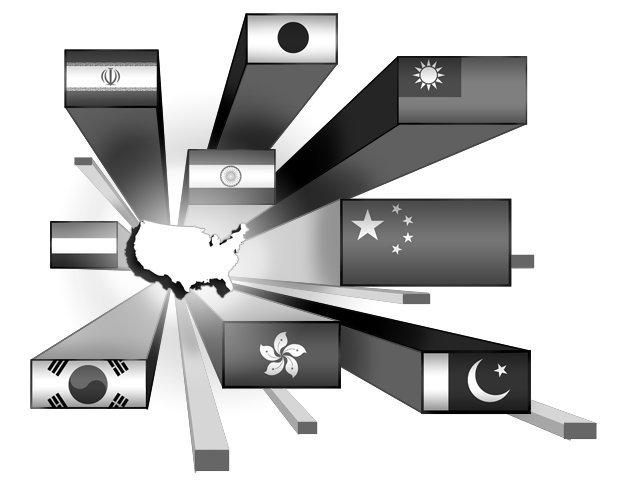
Students from increasingly widespread areas around the world are making MVHS their high school hotspot. In addition to transfers from Asian countries such as Taiwan and India, they have been arriving from the Netherlands and Iran recently as well. What is it that draws them thousands of miles away from their homes to attend high school here?
For senior Leon Zhou, it was the in-state tuition that UCs offered. Due to his father’s job transfer, Zhou moved from his Cupertino home in seventh grade to Shanghai. After five years at The Semiconductor Manufacturing International Corp. Private School, Zhou returned home in June, where he has to live for one year to be considered eligible for the discounted tuition fee. Zhou’s older brother, class of 2005 alumnus Eric Zhou, previously attended MVHS, and his parents decided to send him down a similar educational path.
According to Zhou, SMIC Private School’s curriculum wasn’t particularly challenging compared to MVHS, nor were the international school’s competitors in the area.
“We were the poor school, and then there were the higher national schools. We were like…the economy class on an airplane; all the frugal Asian parents [sent] their kids there,” Zhou said.
In junior Sharmin Zirak’s case, moving from Mashhad, Iran to Cupertino was quite literally a stroke of luck. After winning the lottery last year in Iran, Zirak’s family settled in California where she had relatives such as MVHS junior Kianoush Salari month ago. For years, Zirak’s parents had longed to move to America for the freedom and opportunities that its citizens have.
“There wasn’t any freedom [in Iran]; you couldnít just write the newspaper. They’d move you to jail,” Zirak said.
But limited rights werenít the only issue. According to Zirak, classes in Iran were difficult and the teachers were strict, pushing the students to spend their time studying whenever they could. Whatever free time they had was spent preparing for the next school day. Even outside of school, teachers forbade Zirak from dancing, a hobby that she enjoys freely today.
“[Iran’s teachers were] so harsh, you know? They hate everyone. We had to study all the time, nothing else,” Zirak said.
As with Zhou, her school was also small, with an estimated 400 students. Classrooms were so filled that students sat with their faces just inches from each other.
However, from what English Language Development teacher Chelsa Anderson sees, it isn’t simply the MVHS environment that international students must adjust to, but the teaching methods as well.
“Here, answers are very much more open-ended so that can be kind of confusing for students at the beginning when they are asking, ‘Well, why canít you give me the right answer?’ when there isn’t one right answer,” Anderson said. “I get a lot of students that say that it’s very different here and that you’re not just giving us things to memorize, but you’re making us think.”
Nevertheless, Zirak’s firm teaching and diligent studying back in Iran has paid off. She feels that two of her classes, Algebra 2 and Physics, were not challenging enough compared to the standards that Iran had set for her, and took placement tests in hopes of moving up levels after realizing that she wanted to push herself further. Her future goal is to become an engineer, and she doesn’t regret the decision to move; rather, she feels lucky that she got the opportunity.
“I’m so glad that I’m here, because it’s a change for me,” Zirak said, “A positive change.”

This work is licensed under a Creative Commons Attribution-NoDerivs 3.0 United States License.





